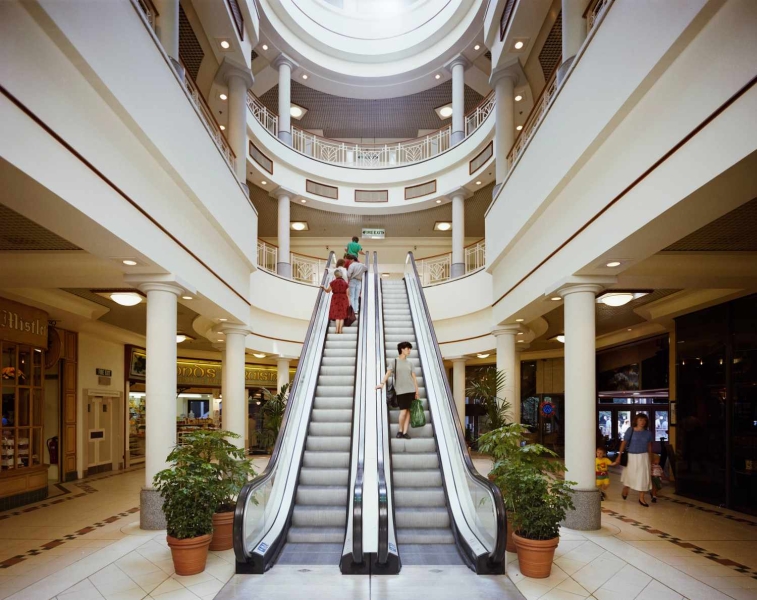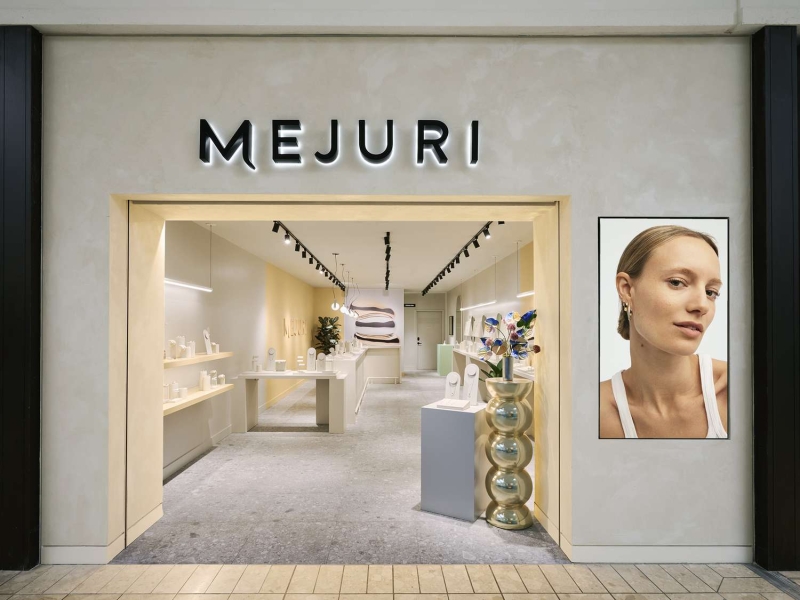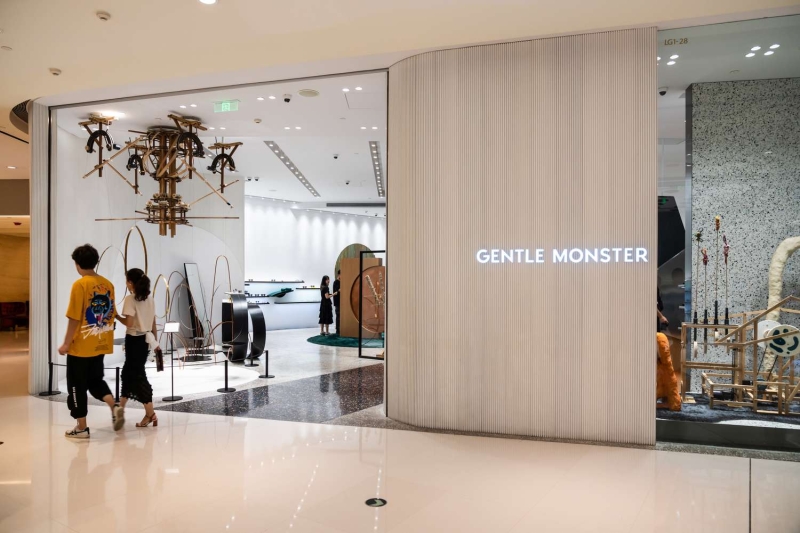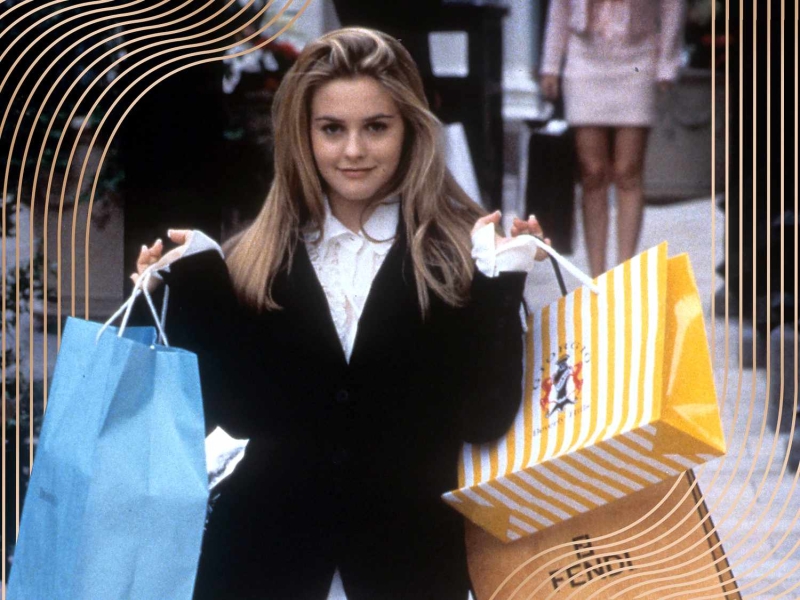Though some nostalgic, beloved brands are languishing, ones with a laser-focus on innovation and community are thriving—and shoppers are taking notice.
The savory, sweet scent of Auntie Anne's pretzels hangs in the air. You're armed with a coupon for Bath & Body Works. The air conditioning is just right and your Sambas squeak on the travertine floor. Life is good, and it's because you're at the mall.
It could be 1994 or even 2024, and you could be there to get away from the oppressive summertime heat or to stock up on gifts for the winter holidays. You could be there in spirit, with feel-good movies like Clueless, Fast Times at Ridgemont High, and Mallrats, or eyebrow-raising ones like Die Hard and Dawn of the Dead. But today, as shoppers opt to make purchases online, every whiff of Warm Vanilla Sugar–scented nostalgia comes with the reality that the halcyon days of the mall are behind us all and that many are empty shells (quite literally) of their former selves.
The long, winding road to today’s seemingly desolate retail landscape is littered with casualties: Sears went from the country’s largest retailer in 1990 to just U.S. 12 stores this year. A 2020 Coresight Research report included the grim projection that “25 [percent] of the country’s approximately 1,000 malls would close shop in the following 3-5 years.” As if that sobering statistic isn’t bleak enough, in April 2023, analysts at UBS projected that “40,000-50,000 American retail stores would shut down by 2027.”
“Going to the mall was such an integral part of my childhood in the ’80s. My dad would always take me there because it was a place to keep me entertained for hours,” says Grace Chan, who chronicles her love of throwback mall culture through an Instagram feed that’s full of Technicolor Lycra and acid-wash denim. Like many people now, her memories of the mall are tinged with a dreamy Lisa Frank filter and a layer of blissful escapism. “We could window shop and browse, marvel at the mall fountain, maybe grab an Orange Julius [smoothie] or see what was playing at the multiplex.”
That ability to meander and make memories may be what ends up saving malls. People are missing their third spaces, a place away from home and work where they can see, taste, and smell new things—and both retailers and developers are taking notice.

After 150 years in the business, Bloomingdale’s is taking its signature Big Brown Bag out of traditional malls and into new territory with Bloomie’s, a concept that’s expanding to New Jersey this fall after setting up shop in Seattle, Chicago, and Virginia. Bloomie’s fits the best of Bloomingdale’s into a smaller space, with a rotating edit of women’s clothing, accessories, menswear, and beauty. It also includes cafés and cocktail lounges, personal stylists, monogramming, alterations, and online order pick-ups, presenting something closer to Chan’s memories of a place to get away.
“Bloomie’s has allowed us to deploy innovations in the physical space. We take the energy, discovery, and fun of Bloomingdale’s and bring it to life in unexpected, non-traditional ways,” says Rachel Abeles, senior vice president of customer growth and revenue. “The smaller format unlocks our ability to enter more markets in the best retail centers, better complement the lifestyle of some of our existing customers, and allows us to introduce more customers to the Bloomingdale’s brand.”
People are missing their third spaces, a place away from home and work where they can see, taste, and smell new things—and both retailers and developers are taking notice.
Chan points out that back in malls’ heyday, it was never just about shopping. It was a gathering place and—for an entire generation—a refuge from parents, chores, and responsibility. "It would be my hangout spot with friends," Chan says. "We would ditch Chinese school on Saturdays to go to the mall and take photos at Photomakers, browse the CDs and movies at Sam Goody's and Suncoast Video, and try not to get beat up by the girl gangs who would also hang out there at the mall."

The Bloomingdale’s expansion aligns with data shown in last year’s Coresight Research report that found foot traffic in “top-tier malls” was up by 12 percent in 2022 compared to 2019. “Most malls are not dying,” Elliot Nassim, president of Mason Asset Management, a real estate investment company, clarified to the Wall Street Journal last year. “They’re just changing.”
His company's M.O. is to purchase and maintain "zombie malls." In a move straight out of Pretty Woman, it sometimes chops up the malls and sells off the pieces, like selling a section directly to Target and using other parts of the mall for "call centers, local small businesses, doctors' offices, bounce-house venues, and gyms."
Shifting focus away from department stores may be why malls are looking a little different lately. What was once seen as prime retail real estate is now being utilized by brands like Planet Fitness, 99 Ranch Market, and even Amazon fulfillment centers. The hallowed Westside Pavilion, which was famously in Clueless, is being converted into a research park for UCLA.
Yet, even as some physical spaces evolve, plenty of mall standbys aren’t just surviving, but thriving. J.Crew was in a valley following its 2010s Jenna Lyons peak—even filing for bankruptcy in 2020—until Creative Director Olympia Gayot’s personal style started having a halo effect on the 40-year-old brand. Meanwhile, Gap’s been having a banner year under Creative Director Zac Posen, with viral moments arising out of Da’Vine Joy Randolph’s denim Met Gala gown and Anne Hathaway’s shirt dress at Bulgari High Jewelry, both teeing up a much-buzzed-about nearly-sold-out collab with Dôen.

Even Abercrombie & Fitch, a ’00s staple that fell out of favor thanks to a string of controversies and an exposé-style Netflix documentary titled White Hot: The Rise & Fall of Abercrombie & Fitch, managed to pull a full 180. Once America’s Most Hated Retailer, A&F has recently racked up a legion of Gen-Z loyalists on social media with a more accessible price point, near-constant promotions, and a wider range of sizes.
“We are a positive, inclusive brand, with a nice sensibility, very different from what they encountered in the past,” CEO Fran Horowitz said in 2016, a stark contrast to the brand’s previous white, prep-and-privileged reputation. A&F boasted sales of $1.45 billion in 2023—up from $1.2 billion the year before (though it has slowed in 2024, according to Fortune).
“We grew up Abercrombie,” Horowitz said of the brand’s success in a 2022 interview. “We really focused on this young millennial, this young, mid-20s consumer, and we got the response that we were hoping for.”
Bath & Body Works, another mall fixture, has reported major accolades as shoppers embrace a combination of nostalgia and innovation with a new collection that’s capitalizing on social media’s obsession with dupe culture, offering scents inspired by designer fragrances. The beloved brand has earned the distinction of being one of 2024’s Most Trustworthy Companies in America and America’s Greatest Workplaces for Women by Newsweek, not to mention a spot on USA Today‘s list of America’s Customer Service Champions—all things that can’t come from e-commerce alone.
Some brands that once eschewed brick and mortar are now embracing it, going from strictly online to hip shopping avenues to the nation's most notable shopping centers. Mejuri, which started as a direct-to-consumer jewelry brand, opened stores in buzzy areas like Venice Beach's Abbot Kinney Boulevard and Williamsburg. This month, the brand is set to open its second mall location at South Coast Plaza in Costa Mesa, California.
"Our goal is to be where our community and customers are—in addition to where potential customers are—so we can create long-lasting and meaningful relationships," says Majed Masad, president and COO of Mejuri, "The mall environment is an exciting one for us. It gives us an opportunity to expose the brand to a broad customer base with an intent to purchase, which in many cases is more than high streets."

Like Bloomie's, Mejuri is hoping to create a space that's about more than just shopping. While there's no denying the ease and convenience of shopping online, it's nearly impossible to create a real sense of community and camaraderie through reviews and comments. "Our stores are a place to explore, touch, and feel our jewelry, and an opportunity to foster an organic connection with a seasoned stylist who is helping you create your stack," Masad adds.
South Coast Plaza is a case study in success, bucking retail trends and earning “$2.5 billion in taxable sales for the year ending June 2023.” In the heart of Southern California, arguably the epicenter of mall culture thanks to shows like Saved by the Bell and The O.C. and movies like Valley Girl, the center continues to grow and redefine what shopping can be. And its story reads like a playbook for achieving the American dream.
“The South Coast Plaza success story begins with local family ownership. The Segerstrom family opened South Coast Plaza in 1967 on the land the family has farmed for 125 years. The family’s focus on bringing the best-of-the-best of global brands to the shopping center is the key factor to its success,” says Debra Gunn Downing, the center’s executive director of marketing, drawing a clear distinction between the center and its peers, which are often owned by property management companies like Westfield (15 in the United States), Brookfield (118 properties), and Simon (194 total). “Their vision in pivoting toward designer and luxury brands beginning in the 1970s is something that separates South Coast Plaza from other retail centers.”
That commitment to incorporating innovation and retail means that the center opens more than 25 new stores per year, so it's not only attracting shoppers and their wallets, but bringing in buzzy brands like Gentle Monster, Amiri, Khaite, Palm Angels, Alaïa, and Courrèges.

The transformation looks slightly different for malls that can’t pull in recognizable names. In an effort to address the housing crisis that looms over California, some malls there are being repurposed (and razed) for condominiums and apartments, thanks to their prime real estate. The strategy is earning mixed reviews, but may offer hope to renters impacted by a lack of affordable options. It could also bring about a return of the elusive third space, especially as some proposals incorporate community centers, parks, and live music venues.
“This is really our opportunity to create something that we can be absolutely proud of for the next generation to create those same fond memories that I have and that others have in a fashion that is consistent with what the times are now,” Westminster Interim City Manager Christine Cordon said of repurposing the Westminster Mall in November 2023.
Chan is hopeful that malls and their colorful history can live on. Though her go-to childhood mall, the Puente Hills Mall (a.k.a. the Twin Pines Mall from Back to the Future), probably won’t ever make a comeback, its DNA won’t fade into the ether. With brands like Champion, Reebok, and Esprit re-releasing iconic pieces (“I really appreciate that some of these vintage brands are embracing their roots, honoring their awesome history, and paying respect to their ’80s and ’90s legacy. It’s something to be proud of,” Chan says), she believes that absent the physical space of the mall, the spirit of those fluorescent lights and pretzel stands can live on.
"It is so heartbreaking to see my childhood mall today looking deserted and barren, and many other malls being torn down," she says. “There are still active malls that I see teens hang out at. Kids today still need fun places to hang out and socialize, because it's so important for their development and sense of well-being. My hope is that the mall will live on, in both indoor and outdoor spaces. This vintage mall rat can only dream."
